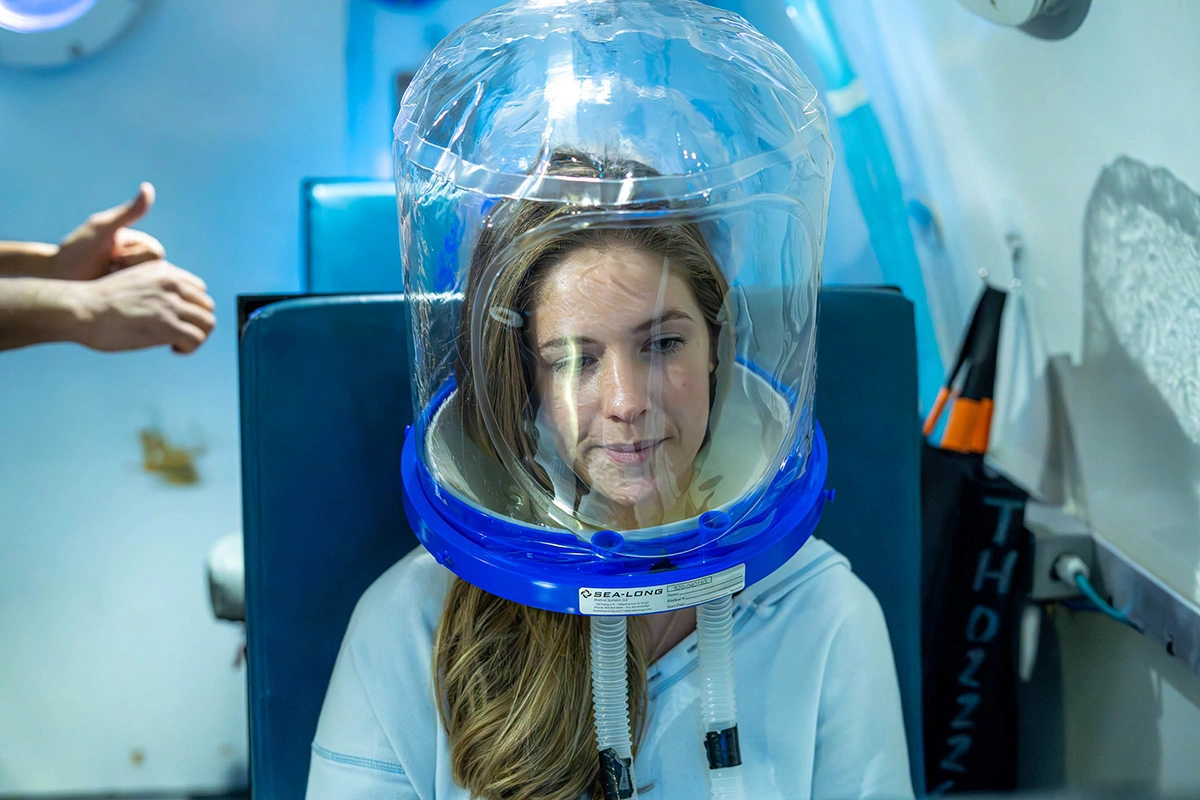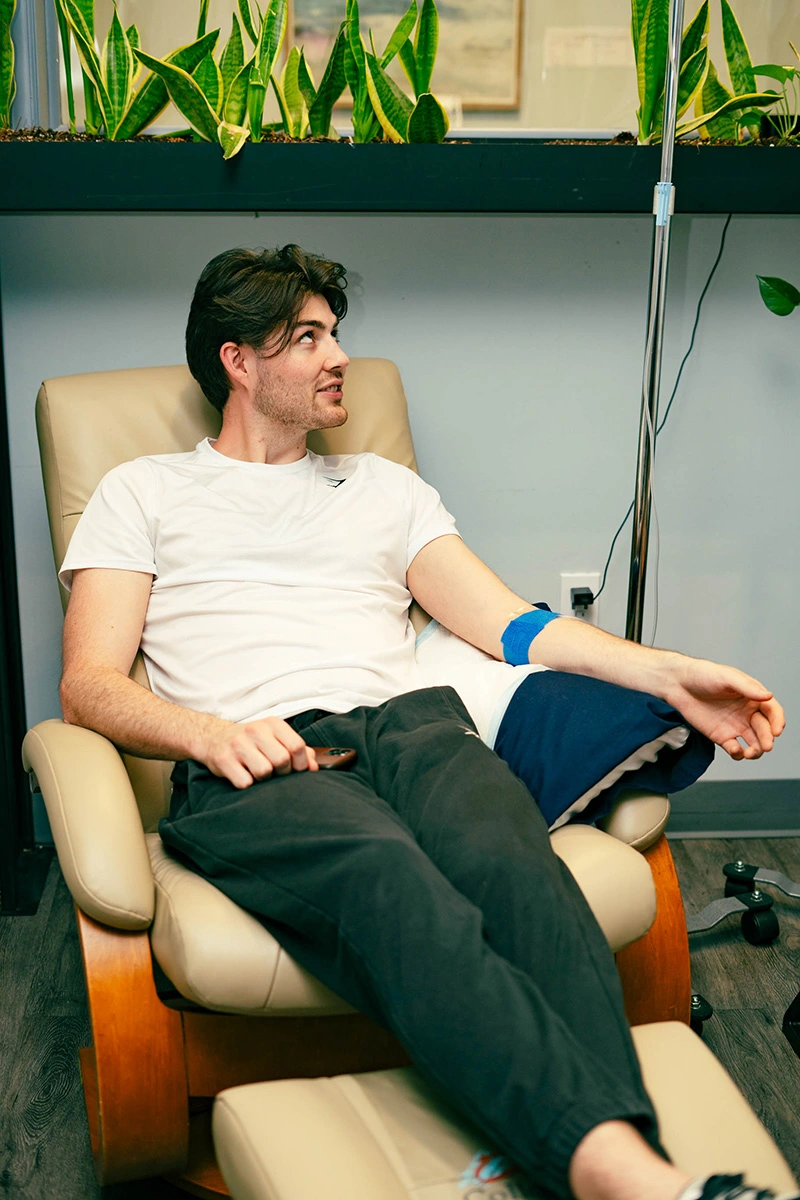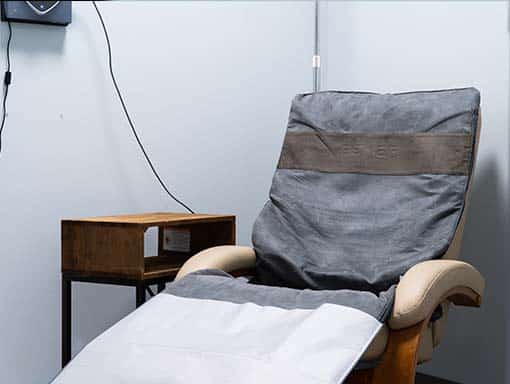Infertility
At Extivita, we believe that integrative medicine offers powerful support in addressing complex conditions like infertility. By targeting underlying physiological factors—such as oxidative stress, inflammation, hormonal imbalances, and impaired circulation—our therapies are designed to support the body’s natural reproductive functions and may improve fertility outcomes.
Each treatment offered at our clinic is grounded in scientific evidence and guided by clinical research. We offer a comprehensive and personalized approach that includes therapies such as Hyperbaric Oxygen Therapy (HBOT), Pulsed Electromagnetic Field (PEMF) therapy, and Nutritional IV therapy. These therapies are integrated into our program to support overall wellness and are available to those seeking to explore their potential role in reproductive health.
Understanding Infertility
Infertility affects approximately 10–15% of couples globally, with causes ranging from hormonal imbalances and structural issues to oxidative stress and poor tissue oxygenation. Emerging research has identified oxidative stress (OS) as a key factor that may damage reproductive tissues, impair ovulation, and may affect sperm function. Conditions like endometriosis and polycystic ovary syndrome (PCOS) in women, along with OS-induced sperm damage in men, are well-documented contributors to infertility. Additional factors—including thyroid dysfunction, tubal blockages, obesity, smoking, alcohol use, and environmental toxins—can further compromise reproductive health.
Preparing both partners’ bodies for conception is essential, as each plays a critical role in achieving a healthy pregnancy. For women, a balanced hormonal environment, optimal ovarian function, and a receptive endometrial lining are crucial for successful embryo implantation. For men, healthy sperm production—including good motility, morphology, and DNA integrity—is key for fertilization and embryo development.
Extivita Therapies for Infertility

Hyperbaric Oxygen Therapy

Nutritional IV Therapy

Pulsed Electromagnetic Field Therapy (PEMF)

Infrared Sauna
Hyperbaric Oxygen Therapy (HBOT)
Hyperbaric Oxygen Therapy (HBOT) involves breathing 100% medical-grade oxygen in a pressurized chamber, typically at 2.0 atmospheres absolute (ATA). This process significantly increases the amount of oxygen dissolved in the blood plasma, enhancing oxygen delivery to tissues throughout the body. The elevated oxygen levels promote angiogenesis (formation of new blood vessels), reduce inflammation, and support cellular repair mechanisms, all of which could be beneficial for reproductive health.
In the context of Infertility, HBOT:
Supports the Uterine Lining
HBOT can help create more blood vessels and increase oxygen flow in the uterine lining, making it a healthier place for an embryo to implant. This is especially helpful for women with a thin uterine lining who are undergoing fertility treatments like IVF.
Helps Ovarian Health
Extra oxygen from HBOT supports the growth and quality of eggs, which is important for getting pregnant. Some studies suggest that HBOT might improve how the ovaries respond to stimulation during IVF.
Reduces Oxidative Stress
HBOT boosts the body’s antioxidant defenses, which can help reduce damage to reproductive tissues. This could be beneficial for the quality of both eggs and sperm and may help improve fertility overall.
Enhances Stem Cell Activation
HBOT has been found in some studies to activate stem cells, which may promote tissue repair and regeneration. Stem cells can help repair damaged tissues and improve endometrial thickness, potentially increasing the chances of successful embryo implantation.
Supports Male Fertility
HBOT has been linked to better sperm health—including movement, shape, and DNA quality. This could be relevant for men dealing with infertility issues.
Nutritional IV Therapy
Nutritional IV Therapy delivers a special mix of vitamins, minerals, antioxidants, and amino acids directly into your bloodstream. This way, your body absorbs these nutrients faster and more efficiently than by mouth. Getting these nutrients quickly can help balance hormones, support cell function, and support overall fertility in both men and women.
Nutritional IV Therapy Supports Fertility in Several Ways:
Egg and Sperm Health
Antioxidants like Glutathione and Vitamin C may help protect eggs and sperm from damage, improving their quality.
Hormone Balance
B vitamins, Magnesium, and Zinc may help regulate hormones needed for healthy ovulation and sperm production.
Recommended IV Therapies
Myers’ Cocktail IV
Components: B-complex vitamins, Vitamin C, Magnesium, and Calcium
- B-complex vitamins may help balance hormones that regulate ovulation and sperm production.
- Vitamin C supports antioxidant protection, reducing damage to eggs and sperm.
- Magnesium and Calcium play key roles in hormone balance and support healthy uterine and ovarian function.
Glutathione IV
Components: Reduced Glutathione
- Glutathione is a powerful antioxidant that may help protect reproductive cells from oxidative stress, improving egg and sperm quality.
- It also supports detoxification, which is essential for overall reproductive health.
Hydration IV
Components: Normal Saline (500mL or 1000 mL)
- Supports overall reproductive health by maintaining fluid balance, which is important for hormonal function and tissue health.
Pulsed Electromagnetic Field (PEMF) Therapy
PEMF Therapy uses low-frequency electromagnetic waves to gently stimulate the body’s cells. This non-invasive treatment may enhance circulation, supports energy delivery at the cellular level, and promotes overall wellness—all of which may be important for reproductive health.
How PEMF Therapy Supports Fertility
PEMF Therapy can positively support several aspects of reproductive health:
Enhanced Blood Flow
Improved circulation helps deliver oxygen and nutrients to reproductive organs, supporting ovarian and endometrial health.
Hormonal Support
PEMF Therapy helps the body maintain balanced hormone levels, which are important for regular cycles and sperm production.

Cellular Energy
By supporting cellular energy processes, PEMF Therapy can contribute to the function of reproductive tissues.
Infrared Sauna
Infrared Sauna Therapy utilizes infrared light to gently heat the body directly, rather than warming the air around you. This method allows for a more comfortable experience at lower temperatures compared to traditional saunas, typically operating between 120°F and 140°F (49°C and 60°C). The deep-penetrating heat may promote relaxation and support overall wellness.
How Infrared Sauna Supports Fertility
Infrared Sauna has been shown to positively influence several aspects of reproductive health:
Enhanced Circulation
The gentle heat from infrared saunas improves blood flow, delivering oxygen and nutrients to reproductive organs, which supports ovarian and endometrial health.
Stress Reduction
Regular sessions can promote relaxation and reduce stress levels, which is beneficial for hormonal balance and overall reproductive health.

Detoxification
Infrared saunas can aid in the elimination of toxins through sweating, potentially reducing the burden of environmental toxins that may affect fertility.
Ready to Take Control of Your Fertility Journey?
At Extivita, we understand that infertility can be challenging—especially for those undergoing IVF or other fertility treatments. We believe that addressing the root causes of infertility, such as hormonal imbalances, oxidative stress, and overall reproductive health, is essential for success. Our therapies are designed to support your body’s natural ability to conceive and can complement IVF treatments to improve your chances of success.
Take the first step today. Schedule a free wellness visit to discuss your fertility goals with our care team. Together, we’ll build a personalized plan to support your journey toward parenthood.
Medical Disclaimer
The therapies mentioned on this page are not FDA-approved for the treatment of infertility. These recommendations are not intended to replace the advice of your fertility specialist or medical provider. They are offered as complementary wellness options that can support overall health and should be used alongside any care plan recommended by your licensed healthcare professional. Individual results may vary.
References
- Ruder, Elizabeth H, et al. “Impact of oxidative stress on female fertility.” Current Opinion in Obstetrics & Gynecology, vol. 21, no. 3, June 2009, pp. 219–222, https://doi.org/10.1097/gco.0b013e32832924ba.
- Didziokaite, Gabija, et al. “Oxidative stress as a potential underlying cause of minimal and mild endometriosis-related infertility.” International Journal of Molecular Sciences, vol. 24, no. 4, 14 Feb. 2023, p. 3809, https://doi.org/10.3390/ijms24043809.
- Sengupta, Pallav, et al. “Oxidative stress affects sperm health and fertility—time to apply facts learned at the bench to help the patient: Lessons for busy clinicians.” Reproductive Medicine and Biology, vol. 23, no. 1, 1 Jan. 2024, https://doi.org/10.1002/rmb2.12598.
- Rossi, Brooke V., et al. “Modifiable risk factors and infertility.” American Journal of Lifestyle Medicine, vol. 10, no. 4, 23 June 2016, pp. 220–231, https://doi.org/10.1177/1559827614558020.
- Kahle, Adam C, and Jeffrey S Cooper. “Hyperbaric Physiological And Pharmacological Effects of Gases.” StatPearls Publishing, 10 July 2023.
- Chen, Jingjing, et al. “Hyperbaric oxygen therapy: A possible choice for patients with resistant thin endometrium during frozen embryo transfer treatments.” Reproductive Biology and Endocrinology, vol. 21, no. 1, 1 Sept. 2023, https://doi.org/10.1186/s12958-023-01123-4.
- Ma, Yang, et al. “Hyperbaric oxygen treatment ameliorates the decline in oocyte quality and improves the fertility of aged female mice.” Reproductive Sciences, vol. 30, no. 6, 15 Dec. 2022, pp. 1834–1840, https://doi.org/10.1007/s43032-022-01082-y.
- Ozgok Kangal, Kubra, and Yasar Ozgok. “Assisted reproductive treatments with hyperbaric oxygen therapy in male infertility.” Türk Üroloji Dergisi/Turkish Journal of Urology, vol. 47, no. 2, 19 Mar. 2021, pp. 98–105, https://doi.org/10.5152/tud.2020.20328.
- Peña-Villalobos, Isaac, et al. “Hyperbaric oxygen increases stem cell proliferation, angiogenesis and wound-healing ability of WJ-mscs in diabetic mice.” Frontiers in Physiology, vol. 9, 30 July 2018, https://doi.org/10.3389/fphys.2018.00995.
- Wang, Yidi, et al. “New advances in the treatment of thin endometrium.” Frontiers in Endocrinology, vol. 15, 30 Apr. 2024, https://doi.org/10.3389/fendo.2024.1269382.
- Ozgok Kangal, Kubra, and Yasar Ozgok. “Assisted reproductive treatments with hyperbaric oxygen therapy in male infertility.” Turkish Journal of Urology, vol. 47, no. 2, 19 Mar. 2021, pp. 98–105, https://doi.org/10.5152/tud.2020.20328.
- Agbalalah, Tarimoboere, et al. “Impact of vitamin B12 on the reproductive health of women with sickle cell disease: A narrative review.” Reproduction and Fertility, vol. 4, no. 3, 1 July 2023, https://doi.org/10.1530/raf-23-0015.
- Banihani, Saleem Ali. “Vitamin B12 and semen quality.” Biomolecules, vol. 7, no. 2, 9 June 2017, p. 42, https://doi.org/10.3390/biom7020042.
- Carr, Anitra, and Silvia Maggini. “Vitamin C and immune function.” Nutrients, vol. 9, no. 11, 3 Nov. 2017, p. 1211, https://doi.org/10.3390/nu9111211.
- Kapper, Celine, et al. “Minerals and the menstrual cycle: Impacts on ovulation and endometrial health.” Nutrients, vol. 16, no. 7, 29 Mar. 2024, p. 1008, https://doi.org/10.3390/nu16071008.
- Adeoye, Oyewopo, et al. “Review on the role of glutathione on oxidative stress and infertility.” JBRA Assisted Reproduction, Jan. 2018, https://doi.org/10.5935/1518-0557.20180003.
- Pastore, Anna, et al. “Analysis of glutathione: Implication in redox and detoxification.” Clinica Chimica Acta, vol. 333, no. 1, 1 July 2003, pp. 19–39, https://doi.org/10.1016/s0009-8981(03)00200-6.
- Giersch, Gabrielle E., et al. “Fluid balance and hydration considerations for Women: Review and future directions.” Sports Medicine, vol. 50, no. 2, 22 Oct. 2019, pp. 253–261, https://doi.org/10.1007/s40279-019-01206-6.
- Peng, Lihong, et al. “The effect of pulsed electromagnetic fields on angiogenesis.” Bioelectromagnetics, vol. 42, no. 3, 6 Mar. 2021, pp. 250–258, https://doi.org/10.1002/bem.22330.
- Dias, Ashini R., et al. “Ozone sauna therapy and pulsed electromagnetic field therapy could potentially improve outcome in women with diminished ovarian reserve undergoing assisted reproductive technology.” Medical Gas Research, vol. 13, no. 4, 15 Oct. 2023, pp. 202–207, https://doi.org/10.4103/2045-9912.350862.
- Ross, Christina L., et al. “The use of pulsed electromagnetic field to modulate inflammation and improve tissue regeneration: A Review.” Bioelectricity, vol. 1, no. 4, 1 Dec. 2019, pp. 247–259, https://doi.org/10.1089/bioe.2019.0026.
- Razik, Mohamed Abdel, et al. “Uterine and ovarian arteries blood flow during the mid luteal phase in women with unexplained infertility.” Middle East Fertility Society Journal, vol. 20, no. 3, Sept. 2015, pp. 209–212, https://doi.org/10.1016/j.mefs.2014.05.004.
- Lewinski, Andrzej, and Maria Brzozowska. “Female infertility as a result of stress-related hormonal changes.” Grem Journal, vol. 3, no. 2, 31 Jan. 2023, pp. 094–098, https://doi.org/10.53260/grem.22302035.
- Urban Float. “BUS Study: How Infrared Saunas Can Help You Detox Heavy Metals.” Urban Float, https://www.urbanfloat.com/blog/bus-study-infrared-saunas-are-a-powerful-detox-tool




